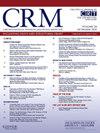Characteristics and outcomes of myocardial infarction among patients with bleeding or hypercoagulable disorders: A nationwide analysis
IF 1.6
Q3 CARDIAC & CARDIOVASCULAR SYSTEMS
引用次数: 0
Abstract
Objective
To examine the characteristics and outcomes of acute myocardial infarction (AMI) in patients with bleeding and/or hypercoagulable disorders.
Background
Studies examining the outcomes of AMI in bleeding/hypercoagulable disorders are scarce.
Methods
The Nationwide Readmissions Database was utilized to identify hospitalizations with AMI from 2016 to 2020. The study cohort was divided into 4 groups: (1) MI without bleeding or hypercoagulable disorders, (2) MI with bleeding disorders, (3) MI with hypercoagulable disorders and (4) MI with mixed disorders. The main outcome was all-cause in-hospital mortality.
Results
A total of 4,206,005 weighted hospitalizations with AMI were identified during the study period, of which 382,118 (9.1 %) had underlying bleeding or hypercoagulable disorders.
The utilization of invasive strategies for the management of MI was highest in patients without bleeding or hypercoagulable disorders (62.6 %) and lowest in patients with mixed disorders (39.3 %). In-hospital mortality was higher among patients with bleeding (adjusted odds ratio [OR] 1.22; 95 % confidence interval [CI] 1.21, 1.24) and mixed disorders (aOR 3.38; 95 % CI 3.27, 3.49) compared with patients without bleeding or hypercoagulable disorders. Among patients with any bleeding or hypercoagulable disorder, those who underwent invasive strategy had lower adjusted odds of in-hospital mortality (aOR 0.28; 95 % CI 0.27, 0.30), ischemic stroke (aOR 0.60; 95 % CI 0.56, 0.64), bleeding (aOR 0.63; 95 % CI 0.61, 0.65), blood transfusion (aOR 0.95; 95 % CI 0.91, 0.99) and 30-day urgent readmissions (aOR 0.70; 95 % CI 0.68, 0.72).
Conclusions
The inpatient management and outcomes of AMI in patients with bleeding/hypercoagulable disorders differ from patients without those disorders.
Revascularization in the setting of AMI was associated with lower in-hospital mortality, which suggests that patients with bleeding/hypercoagulable disorders can be evaluated for standard approaches to managing AMI; however, confounding by indication may be a concern.
出血性或高凝血功能障碍患者心肌梗死的特征和预后:全国性分析。
摘要研究出血和/或高凝状态患者急性心肌梗死(AMI)的特征和预后:研究出血/高凝状态下急性心肌梗死预后的研究很少:方法:利用全国再入院数据库来识别 2016 年至 2020 年的急性心肌梗死住院患者。研究队列分为 4 组:(1) 无出血或高凝障碍的急性心肌梗死;(2) 伴有出血障碍的急性心肌梗死;(3) 伴有高凝障碍的急性心肌梗死;(4) 伴有混合障碍的急性心肌梗死。主要结果是全因住院死亡率:研究期间共发现 4,206,005 例急性心肌梗死加权住院病例,其中 382,118 例(9.1%)有潜在的出血或高凝障碍。无出血或高凝状态的患者采用侵入性方法治疗心肌梗死的比例最高(62.6%),混合型患者的比例最低(39.3%)。与无出血或高凝状态的患者相比,有出血(调整后的几率比 [OR] 1.22;95% 置信区间 [CI] 1.21,1.24)和混合型疾病(aOR 3.38;95% CI 3.27,3.49)的患者的院内死亡率更高。在有任何出血或高凝障碍的患者中,接受侵入性策略的患者院内死亡率(aOR 0.28;95 % CI 0.27,0.30)、缺血性中风(aOR 0.60; 95 % CI 0.56, 0.64)、出血(aOR 0.63; 95 % CI 0.61, 0.65)、输血(aOR 0.95; 95 % CI 0.91, 0.99)和30天紧急再入院(aOR 0.70; 95 % CI 0.68, 0.72):有出血/高凝状态的急性心肌梗死患者与无出血/高凝状态的急性心肌梗死患者的住院管理和预后不同。在AMI的情况下进行血管重建与较低的院内死亡率相关,这表明出血/高凝状态患者可接受标准方法评估,以管理AMI;然而,适应症的混淆可能是一个问题。
本文章由计算机程序翻译,如有差异,请以英文原文为准。
求助全文
约1分钟内获得全文
求助全文
来源期刊

Cardiovascular Revascularization Medicine
CARDIAC & CARDIOVASCULAR SYSTEMS-
CiteScore
3.30
自引率
5.90%
发文量
687
审稿时长
36 days
期刊介绍:
Cardiovascular Revascularization Medicine (CRM) is an international and multidisciplinary journal that publishes original laboratory and clinical investigations related to revascularization therapies in cardiovascular medicine. Cardiovascular Revascularization Medicine publishes articles related to preclinical work and molecular interventions, including angiogenesis, cell therapy, pharmacological interventions, restenosis management, and prevention, including experiments conducted in human subjects, in laboratory animals, and in vitro. Specific areas of interest include percutaneous angioplasty in coronary and peripheral arteries, intervention in structural heart disease, cardiovascular surgery, etc.
 求助内容:
求助内容: 应助结果提醒方式:
应助结果提醒方式:


